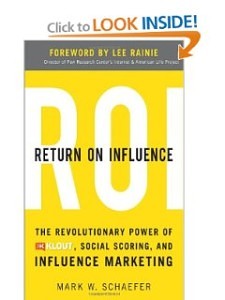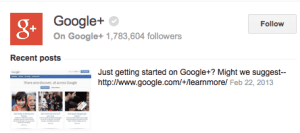It’s daunting being a marketer these days. The lexicon in how we market has widened into an array of confusing methods to attract better brand positioning, growth, ROI, influencer authority, social this and that, and consumer loyalty.
The latest favorite is influencer marketing. Last week on this blog, we took an angular look at Google+, Google Authorship and Influence Marketing.
Buy Influencer Marketing Books
Several books written by peers in my own social circles are must reads to keep us thinking strategically and visionary.
You may pre-order Influence Marketing: How to Create, Manage and Measure Brand Influencers in Social Media Marketing (Que Biz-Tech) written by Danny Brown and Sam Fiorella.
 They have been writing it up with a large amount of content on blogs, Google+ Communities, and in comments all over. It promises to be a must-buy and read.
They have been writing it up with a large amount of content on blogs, Google+ Communities, and in comments all over. It promises to be a must-buy and read.
Meanwhile, a dear colleague of mine, Mark W. Schaefer, has written a quick read,Return on Influence, The Revolutionary Power of Klout, Social Scoring, and Influence Marketing, his second book that has hit the corporate world (IBM recently bought 500 copies) and the social media sector by storm.
 Because I know all three of these peeps and vouch for their own cred and influence, you ought to consider purchasing these books for your reading pleasure.
Because I know all three of these peeps and vouch for their own cred and influence, you ought to consider purchasing these books for your reading pleasure.
Now, back to the topic at hand…If some marketers think they’re drowning, how does a company cope with that?
Does every marketing team need to know every aspect of marketing, or can they learn in a steady trickle?
The good news is, everyone is in the same boat absorbing knowledge and learning new tactics at the same time. How marketers execute on these evolving techniques is how one differentiates.
Here are my thoughts on how companies should stay the course with these basics and never mind the marketing buzz until prepared to address them head on:
Five Marketing Basics
1. Set up a solid team of people with the right mix of marketing for various types of organizations, someone in PR, another knows email and inbound marketing, a copywriter, a social media enthusiast, and someone familiar with advertising for all media.
2. Assess and solidify brand and dust off that mission statement! It’s critical to revisit this to ensure the company is growing in alignment with founders’ goals and vision.
3. Hire Jayme Soulati (shameless, I know) to do your message mapping exercise. No matter if your company is established or just starting, message mapping charts your company’s communication course.
4. Build a responsive website. I’m not talking about a website that looks good on a mobile device; I’m talking about a scalable site that conforms to smart devices and positions calls to action and contact information on the top of the screen followed by all the rest of the goodies. When your company keeps a website that requires visitors to slide windows back and forth, then the message you’re sending is pretty much, “We just don’t care.”
5. Pay attention to social media and engage already. You have to; you just do. In this post-social media adoption era, there are still companies without the basics in place. Companies owe it to consumers to connect via social media channels. If all we get is a direct mail coupon with no other channel, that is grounds for negative online reputation.
Confused about any of the above? Please ask me, I’m right here.
SUBSCRIBE AND NEVER MISS A POST!





 By
By 























